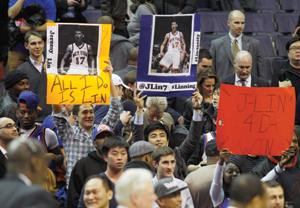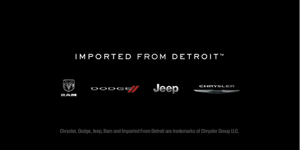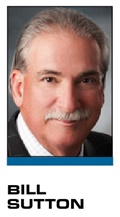The ascendance of Jeremy Lin has been one of the most dominant sports stories for the past month, and the impact it is having is remarkable. Sure it is affecting ticket sales and jersey sales as well as TV ratings, but that’s just the beginning.
The impact of his and the New York Knicks’ success extends to:
■ Playing a catalyst role in the negotiations between the MSG Network and cable providers, specifically Time Warner Cable.
■ Drawing attention to Taiwan as a sovereign state and not part of China.
■ Playing out the NBA global vision not only for Asia but throughout the world.
 |
Jeremy Lin’s success story has had an impact on the NBA, the Knicks and fans everywhere.
Photo by: GETTY IMAGES
|
■ Propelling All-Star Weekend television ratings to lofty heights.
■ Showing the true value and impact of dynamic pricing.
■ Demonstrating that we are always hungry for a Cinderella story.
Those of us in my age bracket are aware that this is a story that has been told before (and will be told again and again in the future).
For example, Johnny Unitas was cut by the Steelers and playing sandlot football before being signed by the Baltimore Colts and becoming a hall of famer. Kurt Warner was bagging groceries and playing for the Iowa Barnstormers in the Arena Football League before joining the St. Louis Rams and Arizona Cardinals in three Super Bowls.
Mark “The Bird” Fidrych burst on the scene for the Detroit Tigers in 1976 as a dominant player (although for a very short time due to injuries). Fernando Valenzuela won the Rookie of the Year, the Cy Young Award and a World Series title with the Dodgers in 1981. Valenzuela was so popular — a phenomenon known as “Fernandomania” — that attendance increased by an average of 9,000 fans whenever he pitched in road games. Much like Jackie Robinson for African-Americans and Roberto Clemente for Puerto Ricans and other Latinos, he became a cultural icon in the Latino community in the United States and a hero in his home country of Mexico.
The Lin story has its own elements — an Asian-American, not recruited out of high school, played at Harvard, cut by two NBA teams, played in the NBA D-League and (my favorite) sleeping on a couch in his brother’s apartment while waiting for his NBA minimum $750,000 salary to become guaranteed. The fact that he plays in New York, combined with all these elements and with his impact on the Knicks (winning seven of his first seven starts) created the global “Linsanity” and an Internet explosion.
As marketers, we understand the emotional and immediate responses to this type of a story. Consider the Detroit ad campaign featuring Chrysler, which began in 2011, and was again featured on Super Bowl Sunday with the assistance of Clint Eastwood. It is a story of a city that was carried to great heights and prominence by the automobile industry only to lose economic influence, population
 |
| Marketers understand the emotional connection a campaign, like Detroit’s, can create. |
and success because of the growth of automobile manufacturers outside the U.S. This led to the financial decline (and filing for bankruptcy protection by two) of these same corporations that had been the lifeblood of Detroit. The initial message was “Imported from Detroit,” and was morphed into an “It’s halftime in America,” alluding to a watch for a great second-half comeback. The appeal has been twofold: The message is patriotic but also hails the rise of the underdog coming back and being viable and successful once again — the American automotive industry and the city of Detroit. The facts? General Motors earned its largest profit ever in 2011, two years after it nearly collapsed. Strong sales in the U.S. and China helped the carmaker turn a profit of $7.6 billion, beating its old record of $6.7 billion in 1997 during the pickup and SUV boom. And Chrysler Group earned its first annual profit as an independent company since 1997.
What can we learn as sport marketers and, more importantly, what can we do?
1. We need a genuine story that is believable about our product or service that others will tell and retell because of its appeal. Not every team will have a Jeremy Lin underdog story. Others, like the Washington Nationals with Stephen Strasburg, will have a phenom story about the ability of one of their players. That story speaks to the uniqueness of Strasburg’s talents.
2. If the story has an emotional appeal, it might create a strong interest on a variety of levels. Consider Lance Armstrong: surviving cancer, being globally successful on the cycling stage, and then converting his personal and professional achievements to create the Livestrong Foundation to help others in their struggles against cancer. More than 80 million of the yellow bracelets have been sold at $1 each to raise money to fight cancer, and a visit to the website shows that there is a significant menu for involvement offered to anyone seeking to raise or donate funds for this cause. The V Foundation is a similar example, teaming with ESPN to create a broad media and events platform to tell its story.
3. Is the story important? Does it have the ability to live on after the initial telling and coverage of the story? Everything has a lifespan that is dependent upon a number of things — competition, authenticity, popularity and acceptance.
All of the examples we have discussed fit these criterion. The Lin story, because of the Internet, social media, ethnicity and playing in the sports media mecca could be a very interesting story. Let’s see how many chapters will be written.
Bill Sutton (wsutton@bus.ucf.edu), effective May 6, will be the founding director of the Sport and Entertainment Management MBA/MS Program at the University of South Florida in Tampa, and principal of Bill Sutton & Associates. Follow him on Twitter @Sutton_Impact.







